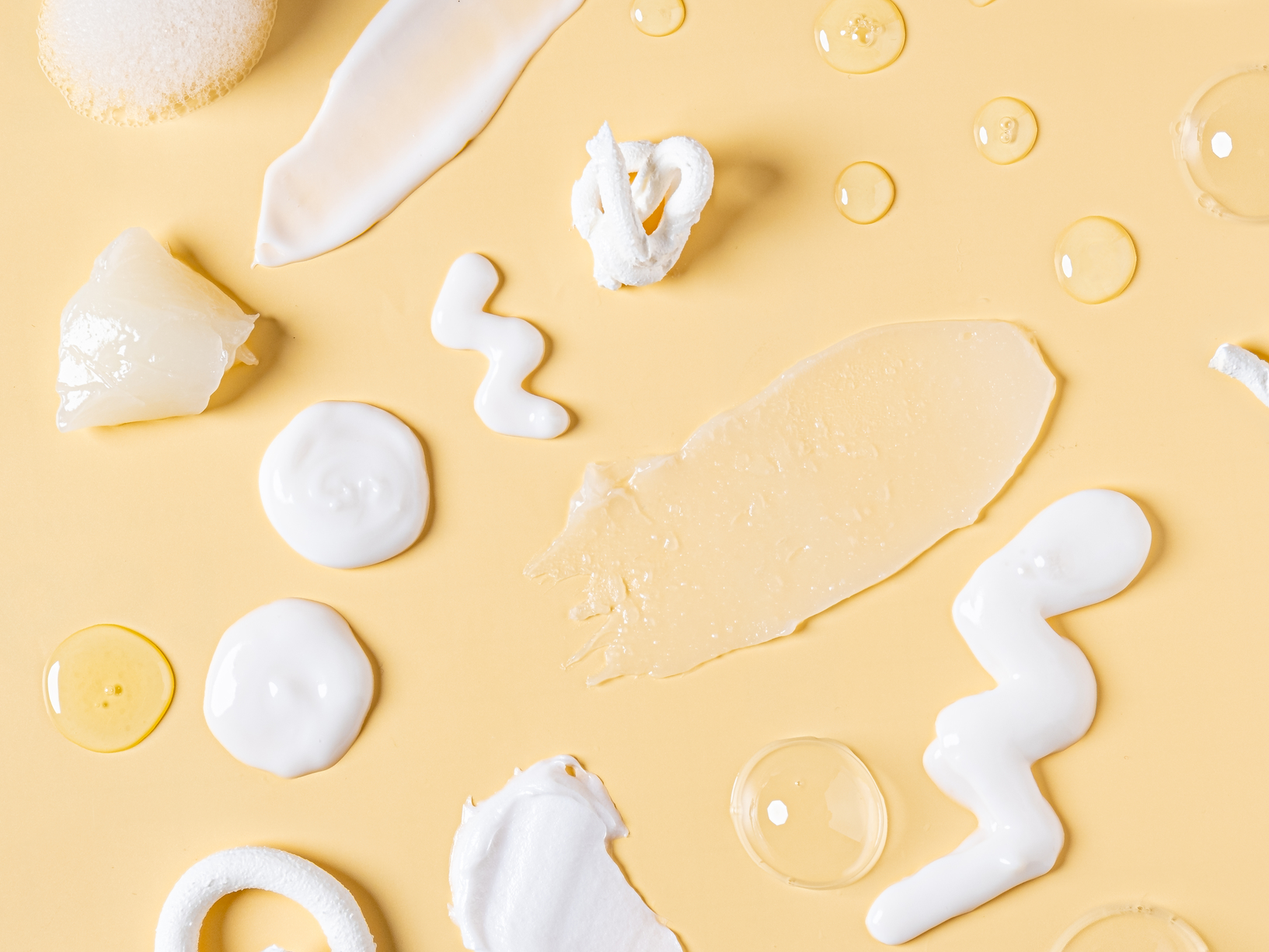Want to know the secret to taking your skincare routine from mediocre to grand? The answer is layering your skincare products in the correct order.
“Layering is important because the order in which you apply skincare products determines their efficacy,” Dr. Julia Tzu, dermatologist and medical director of Wall Street Dermatology, told Glowsly.
Get the order wrong, and you’ll limit how well the products absorb into your skin. You may even create skin irritation. The proper sequence of skincare products can seem daunting, but it’s pretty straightforward once you know the basics. We’ve got you covered in our step-by-step guide.
Step 1: Cleanser
If you have oily skin, be sure to wash your face before slathering on skincare products. This basic step removes dirt, excess sebum (lipids that help maintain the skin barrier), bacteria, and environmental pollutants that build up on your skin. Removing debris helps unclog pores, fight dullness, and prevent acne. It also allows skincare products to better absorb into your skin and work their magic. Cleanse your face twice a day — once in the morning and once at night.
However, if you have dry, combination, or aging skin, you probably aren’t producing enough sebum at night to warrant a morning cleanse. In fact, washing your dry skin too often may make it more dehydrated and irritated. Instead, try removing minor debris with a splash of water, a damp face cloth, or a cotton pad soaked in a hydrating toner or essence. In the evening, use an ultra-creamy and moisturizing cleanser to remove makeup and impurities. Avoid foam or gel cleansers, as these are often harsh on dry skin.
Step 2: Toner
Once your skin is clean, you’ll layer your skincare products in the order of consistency, starting with lightweight liquids and ending with heavier creams.
Typically, the lightest skincare product is toner. This liquidy leave-on product restores the skin’s pH balance and prepares it for the next steps in your routine, according to Dr. Alpana Mohta, dermatologist and medical adviser at Better Goods.
The best toner for oily skin is hydrating and filled with balancing and pore-minimizing ingredients. You may also opt for a formula with soothing, acne-fighting, or brightening properties. Just be sure to avoid toners with moisture-stripping alcohol. If you use a toner with pH-dependent actives like salicylic acid, wait 10 to 20 minutes before layering your next product.
Dry, combination, and aging skin benefit from hydrating toners infused with antioxidants and anti-inflammatories.
Step 3: Serums and actives
Next, apply any serums. These are slightly thicker and tend to include more actives or a higher concentration of actives than toners.
It’s important to apply actives early in your routine because “skincare [products] with active ingredients need to be in direct contact with the skin for it to work,” Tzu said.
There’s an exception, though, for people with sensitive skin who use products with skin-irritating ingredients like retinol. “You may consider applying moisturizer first to reduce the irritation,” Tzu added.
Choose a product based on what your skin needs. Many skin types could use a serum with an antioxidant like vitamin C to stabilize their sunscreen in the morning and a serum with retinol to fade fine lines and improve skin texture at night.
Step 4: Spot treatment
If you have acne-prone skin, use your spot treatment after serums and actives both day and night. Look for products with benzoyl peroxide or tea tree oil and press a bit over the areas where your active breakouts are. Wait a few moments to allow the treatment to sink in before moving on to the next steps in your routine.
Step 5: Moisturize
Some people find that layering a serum with a moisturizer results in too much product on their skin during the day. If that’s the case for you, feel free to choose one.
While dry and aging skin types can use a cream-based moisturizer, oily and combination skin types will probably prefer a lotion- or gel-based moisturizer with SPF for the daytime. Slightly heavier creams should be fine at nighttime, working to seal in all of the actives from earlier skincare steps.
Nighttime cream is also a great opportunity to sneak in any actives missing from your serum. For example, if your serum offers humectants and antioxidants, use a moisturizer that has peptides or vitamin A.
Now’s also the time to apply eye serum or cream if you’d like. Generally, you’ll use eye serum or cream as part of your evening routine, but you can also use it in the morning if your skin gets very dry.
Step 6: Sunscreen or moisturizer with SPF
Every skin type needs sunscreen during the day. “Sunscreen is essential for protecting the skin from the damaging effects of UV rays and should be applied every day, even on cloudy days,” Mohta said.
To cut back on products, look for a moisturizer that contains SPF. Oily skin types can even use sunscreen as a replacement for moisturizer.
Whichever form of sun protection you choose, be sure to apply it in two layers of one-eighth of a teaspoon, waiting a few minutes in between to allow the first layer to absorb. Once you’ve applied the second layer, wait 15 to 30 minutes before applying makeup so it doesn’t dilute or remove your sunscreen.
Final thoughts
Layering your skincare products in the proper order is crucial to ensuring their effectiveness. The general rule is to layer your thinnest product first and build up to your heavier ones. While the exact products vary, every skin type should typically use a cleanser (even if it’s just a damp cloth), antioxidant serum, nighttime skin active, moisturizer, and sunscreen.





